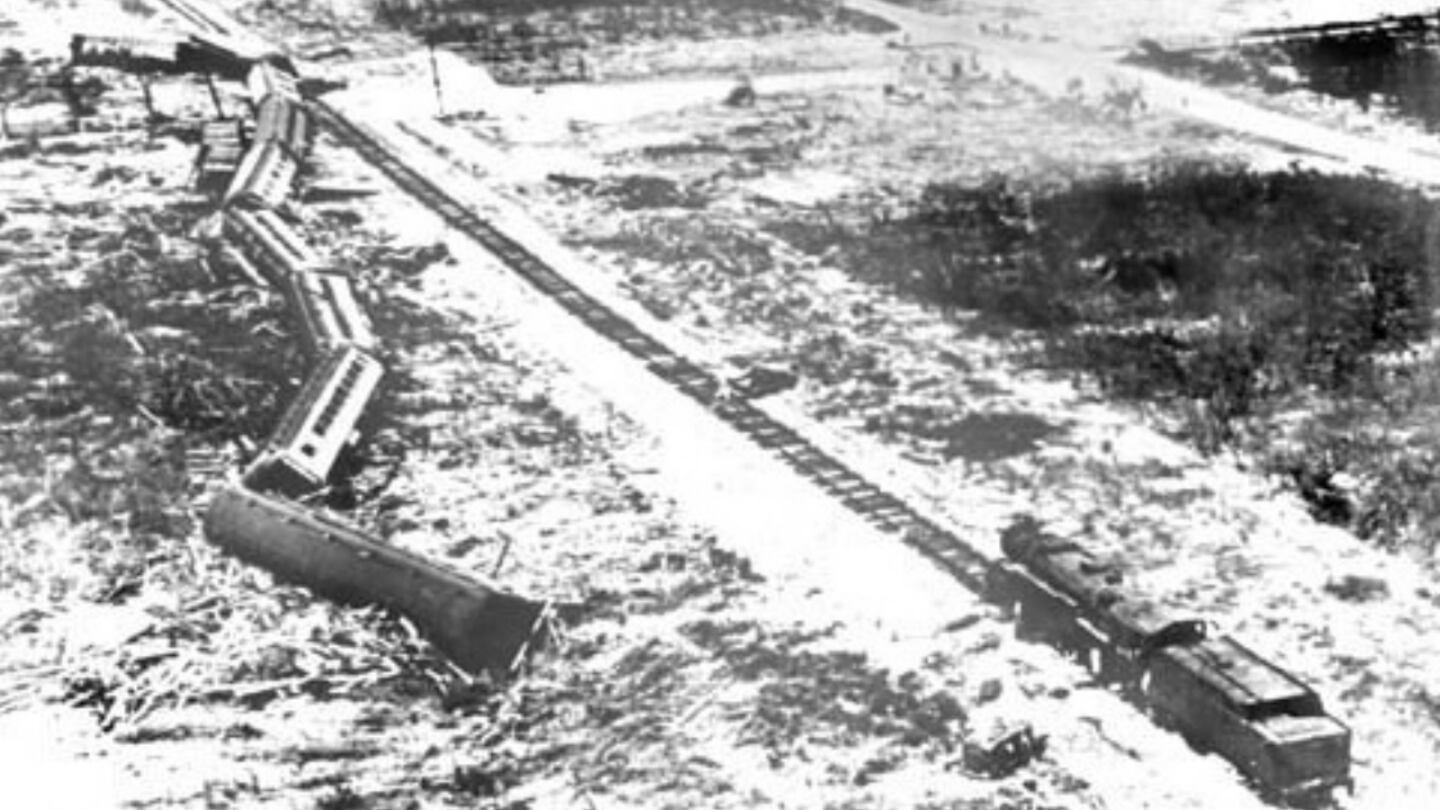Hurricane Ian is the latest major hurricane to make landfall in Florida, coming onshore near Sanibel Island on Wednesday. But the Labor Day Hurricane, which hit the Florida Keys with maximum sustained winds of 185 mph on Sept. 2, 1935, remains the measuring stick for Florida hurricanes.
Two other systems have hit the Florida peninsula as verified Category 5 storms -- Michael on Oct. 10, 2018, which slammed into the Panhandle near Mexico Beach with maximum sustained winds of 160 mph; and Andrew, on Aug. 24, 1992, which had winds of 165 mph and caused about $25 billion in damage. At the time, Andrew was the costliest tropical cyclone in U.S. history. Irma, which hit the state on Sept. 10, 2017, as a Category 4 storm, caused more than $50 billion in damage.
The Labor Day hurricane tops them all in terms of sheer strength.
Historians can point to the Lake Okeechobee hurricane of 1928, the Great Miami storm of 1926 and the Florida Keys hurricane of 1919 as major tropical systems that impacted Florida. Hurricane Donna hit the state as a Category 4 storm in 1960. Hurricane Charley, which current meteorologists compare to Ian, was a Category 1 storm in 2004 but grew into a Category 4 storm overnight and, instead of impacting the Tampa Bay area as projected, made a right turn in the Gulf of Mexico and hit Punta Gorda, 100 miles southeast of Tampa.
The National Oceanic and Atmospheric Administration estimates that the Labor Day hurricane, which made landfall at Matecumbe and Long keys near the village of Islamorada as a Category 5 storm, had maximum sustained winds of 185 mph. Several reports at the time indicated estimated gusts were exceeding 200 mph.
Forecasting storms was a primitive exercise in 1935, at the height of the Great Depression. That prevented forecasters from anticipating the storm’s rapid intensification. According to Barry Keim and Robert Muller’s 2009 book, “Hurricanes of the Gulf of Mexico,” the Labor Day storm, which was a Category 1 cyclone at 7 a.m. on Sept. 1, had grown to Category 4 status 24 hours later and reached Category 5 status at 7 p.m. on Sept. 2 shortly before making landfall.
Finding the storm had been an exercise in frustration. Early reports indicated that the hurricane would scrape the northern coast of Cuba on Labor Day weekend. However, the Cuban weather service saw no evidence of the storm, and according to the NOAA, no one was sure where it was.
A Pan Am flying boat pilot on his daily run from Key West to Havana then noticed a cloud mass farther east from where the storm should have been and contacted the Cuban National Observatory.
Capt. Leonard Povey, an American barnstormer and the chief training pilot for the Cuba Army Air Corps, volunteered to fly a biplane and confirm the location of the storm, according to National Geographic. Povey flew over the Florida Straits and found the storm much farther north and moving to the northwest.
“It appeared to be a cone-shaped body of clouds, inverted, rising to an altitude of 12,000 feet,” Povey later told The Associated Press.
As the storm approached, there were hundreds of World War I Army veterans working in the Keys to build an overseas railroad from Miami to Key West. According to NOAA, the Florida Emergency Relief Administration alerted the Florida East Coast Railway to send a relief train to evacuate the soldiers, who had remained at the camps during the Labor Day weekend.
The holiday hindered the FEC’s efforts to assemble a train and crew, and by the time a train reached the Upper Keys, debris from the storm was blocking the tracks, causing further delays.
The train reached Islamorada at about 8:20 p.m., the same time as the hurricane’s storm surge. The massive storm surge pushed cars off the tracks, except for the locomotive, Keim and Muller wrote. Miraculously, no one from the train was killed, NOAA said.
However, the winds from the storm ripped off the roof and the second story of the Hotel Matecumbe in Islamorada, which served as the headquarters for the work crews.
More than 440 people drowned -- 280 veterans and 160 residents. Many of their bodies were swept into Florida Bay. Because telegraph lines were down and access was hindered by the washed-out railroad tracks, news of the extent of the destruction did not reach the mainland for several days.
“The conditions we found there were indescribable,” Aubrey Williams, federal relief administrator, and Col. George E. Ijams, head of the Veterans Administration, wrote in a 3,000-word preliminary report to President Franklin D. Roosevelt a week after the deadly storm, according to the Miami News.
The storm continued to cause problems as it traveled up the Florida peninsula in the Gulf of Mexico. According to Wayne Frye’s 2002 book, “Storm of the Century,” more than 5 inches of rain were recorded in Tampa and St. Petersburg on Sept. 3. The storm came on shore for a second time at Cedar Key on the afternoon of Sept. 4, and the waters of the Gulf flooded the quiet island hamlet.
“Main Street, from here, looks like a turbulent river now,” William M. Pepper, the editor of The Gainesville Daily Sun, wrote in an article.
Residents outside of Florida were also impacted.
Maggie Gamble, of Gastonia, North Carolina, was killed when the storm’s blinding rainfall prevented her from seeing an oncoming train at a railroad crossing, Drye wrote. Virginia, which had been soaked by rain the previous week, saw floods in Richmond when the James River overflowed because of the storm.
The storm finally left the Eastern Seaboard, pulling away from the Maryland coast on Sept. 6. It regained hurricane strength the next day before finally dying as it passed Canada’s Maritime provinces.
Many of the veterans killed in the Keys during the Labor Day storm were buried in a mass grave at Miami’s Woodlawn Cemetery in the Little Havana neighborhood.
Bernard Russell, who lived in Islamorada when the hurricane hit, told Drye that the experience left him “numb.”
“Those memories of what happened, you don’t blot them out overnight,” Russell said. “You lost everything but the shirt on your back. Some of us didn’t even have a shirt.”
Information from online newspaper archives were used in compiling this report.
©2022 Cox Media Group

























